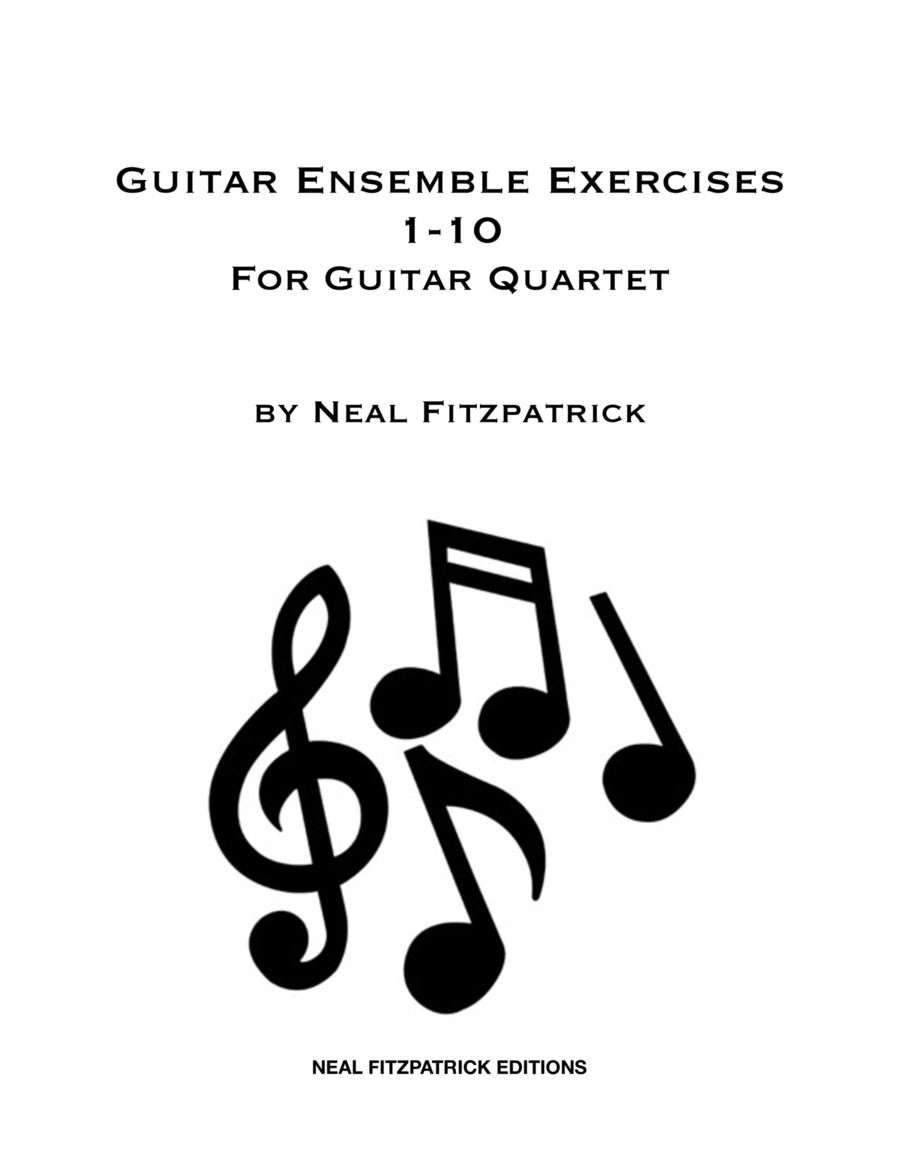Guitar Ensemble Guitar - Level 1 - Digital Download SKU: A0.955445 Composed by Neal Fitzpatrick. Arranged by Neal Fitzpatrick. Contemporary,Instructional,Jazz. Score and parts. 22 pages. Neal Fitzpatrick Editions #6272289. Published by Neal Fitzpatrick Editions (A0.955445). This set of exercises is for guitar quartet and can be played by both classical/nylon guitars and steel string guitars or a combination of both. These exercises can be a great introduction to score and ensemble reading using primary rhythms and notation. Each exercise is multi-dimensional in that each player can try every part. By doing this the student hones important skills such as entering and the piece, sight and score reading, listening to musical partners, counting through the rests, as well as enhancing the corresponding technical skills that accompany proper execution off the exercises. Guitarist Neal Fitzpatrick has a B.M. from the Hartt School where he studied with Alan Spriestersbach and his M.M. from The Yale School of Music where he studied with Benjamin Verdery. He also studied extensively with Sharon Isbin and Sal Salvador. Based in Connecticut, he is active as a soloist and in the chamber music scene. You can contact him here:http://www.nealfitzpatrickguitar.comhttps://www.youtube.com/channel/UCqZJwiMXPYbpckJVveQ6qag
